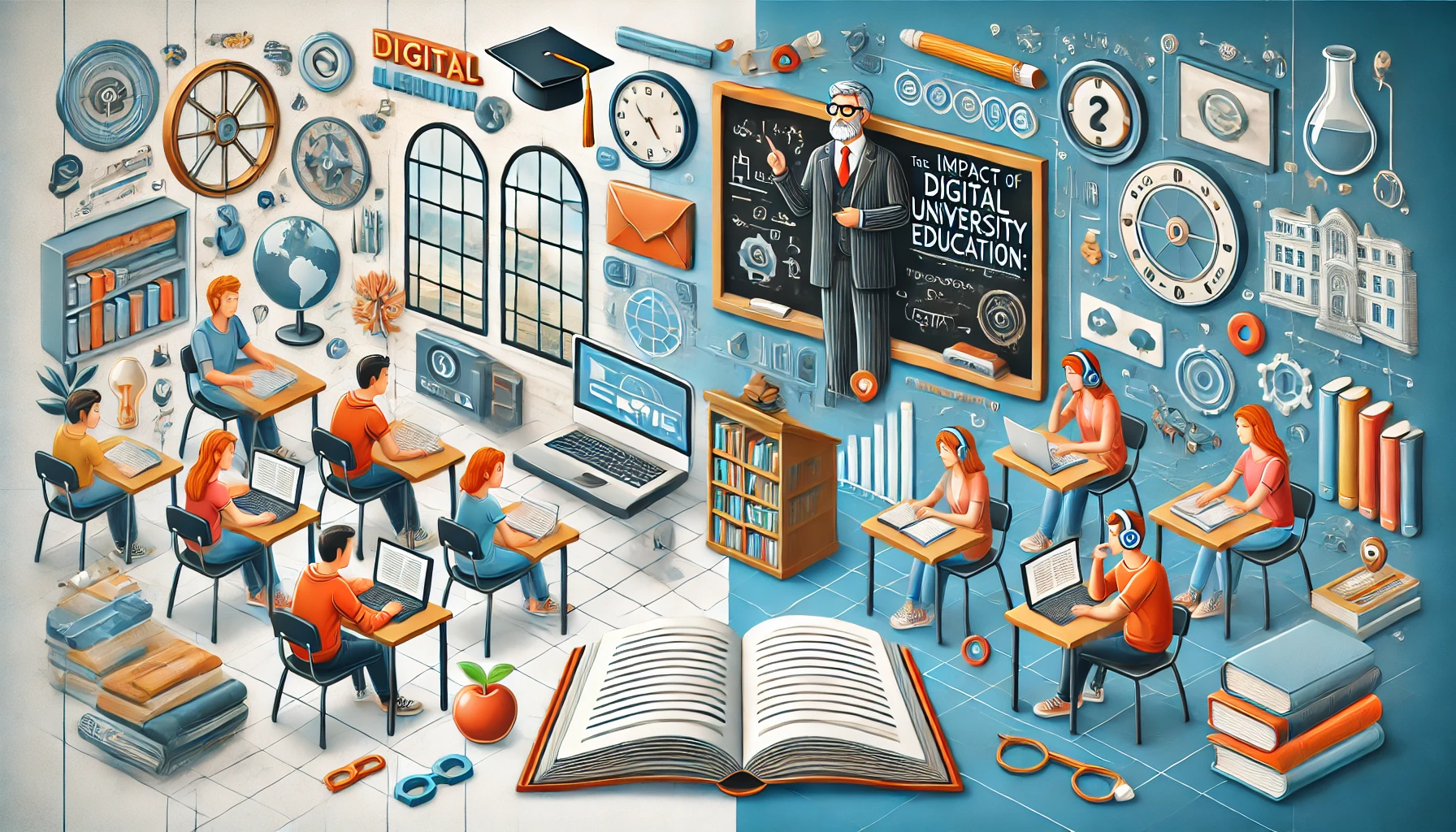The Impact of Digital Learning on Traditional University Education: Challenges and Opportunities

The landscape of education has undergone a seismic shift over the past decade, driven largely by advancements in digital technologies. Traditional university education, long characterized by face-to-face lectures, campus libraries, and in-person discussions, now finds itself at a crossroads with the rise of digital learning. From online courses to virtual classrooms, digital learning offers a new paradigm that challenges the traditional model. However, this transformation also brings with it a unique set of challenges and opportunities that are reshaping the way we think about higher education.
The Rise of Digital Learning
Digital learning, also known as e-learning or online education, has been growing rapidly due to its flexibility, accessibility, and cost-effectiveness. Universities worldwide have started offering online courses, degrees, and certifications to cater to a broader audience that goes beyond their geographical boundaries. The COVID-19 pandemic further accelerated this trend, forcing institutions to adopt online learning almost overnight.
The key drivers of digital learning include technological advancements, increasing internet penetration, and the growing demand for education that fits into students’ busy lives. Platforms like Coursera, Udemy, and edX have democratized access to education, offering courses from prestigious universities to learners worldwide, often at a fraction of the cost of traditional university programs.
Challenges Faced by Traditional Universities
1. Maintaining Educational Quality
One of the main challenges traditional universities face is ensuring that the quality of online education matches that of in-person classes. Online learning often lacks the direct interaction between students and instructors, which can lead to a less engaging learning experience. Universities must find ways to keep students motivated and ensure that the curriculum delivered online maintains the same rigor and depth as traditional programs.
2. Technology Infrastructure
For many institutions, shifting to digital learning requires significant investment in technology infrastructure, including learning management systems, video conferencing tools, and cybersecurity measures. Smaller universities and colleges, in particular, may struggle with these investments, leading to disparities in the quality of digital learning offered across institutions.
3. Faculty Adaptation and Training
Faculty members accustomed to traditional teaching methods often face difficulties adapting to online teaching environments. Many educators require training to effectively use digital tools, create engaging online content, and manage virtual classrooms. This adjustment period can affect the overall learning experience for students and challenge the traditional model of teaching.
4. Student Engagement and Retention
Maintaining student engagement in a digital environment is a significant hurdle. Online learning can feel isolating, and students may struggle with staying motivated without the physical presence of peers and instructors. Universities must innovate with interactive content, virtual labs, and collaborative tools to create a more engaging and immersive learning experience.
Opportunities Brought by Digital Learning
1. Expanded Access to Education
One of the most significant opportunities presented by digital learning is the ability to reach a global audience. Students from different geographical locations, socioeconomic backgrounds, and professional commitments can access high-quality education that was previously out of reach. This democratization of education allows universities to expand their reach and impact.
2. Personalized Learning Experiences
Digital learning enables personalized learning experiences, where students can learn at their own pace, revisit content as needed, and access resources tailored to their individual needs. Adaptive learning technologies can analyze student performance and provide customized feedback, enhancing the learning experience in ways that traditional classrooms often cannot.
3. Flexibility for Non-Traditional Students
Online education offers unparalleled flexibility, making it particularly attractive to non-traditional students such as working professionals, parents, and those with other commitments. The ability to learn on one’s own schedule allows these students to balance their education with other responsibilities, increasing the accessibility and appeal of higher education.
4. Innovation in Teaching and Learning
The shift to digital learning has sparked innovation in teaching methods. Interactive simulations, virtual reality (VR) environments, and artificial intelligence (AI)-driven tutoring systems are just some examples of how technology is enhancing the learning process. These innovations can make learning more engaging, practical, and aligned with the skills needed in today’s job market.
The Future of University Education
The integration of digital learning into traditional university education is not a passing trend; it represents a fundamental shift in the way education is delivered and consumed. As universities continue to adapt, a blended learning model that combines the best of both traditional and digital approaches is likely to become the norm. This hybrid approach can offer the flexibility of online learning while preserving the personal touch of face-to-face interaction.
Ultimately, the impact of digital learning on traditional university education will depend on how well institutions can navigate the challenges and capitalize on the opportunities. By embracing digital learning while maintaining a commitment to quality, universities can create a more inclusive, flexible, and forward-thinking educational environment that meets the needs of a diverse and evolving student population.




